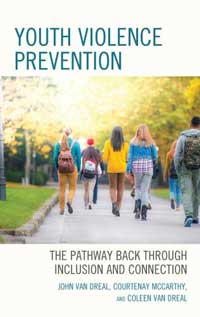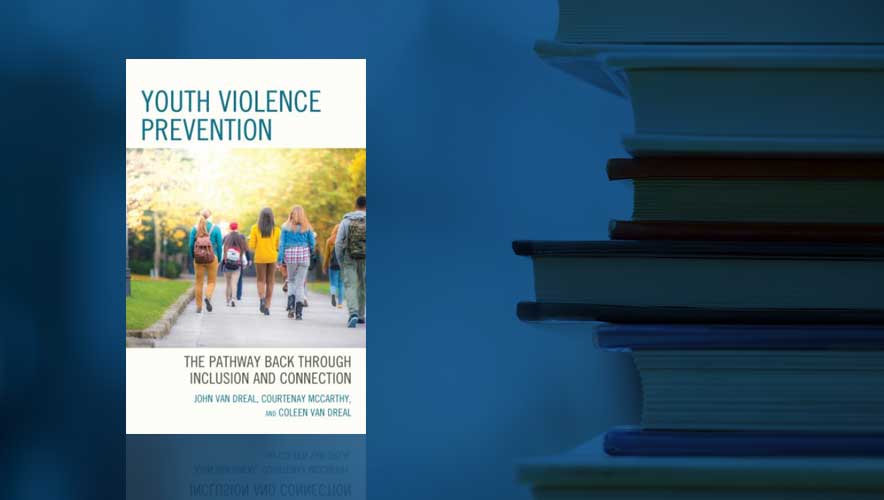Book Review: Youth Violence Prevention: The Pathway Back Through Inclusion and Connection
 Youth Violence Prevention: The Pathway Back through Inclusion and Connection. By John Van Dreal, Courtenay McCarthy, and Coleen Van Dreal. Rowman and Littlefield; https://rowman.com/; 156 pages; $35.
Youth Violence Prevention: The Pathway Back through Inclusion and Connection. By John Van Dreal, Courtenay McCarthy, and Coleen Van Dreal. Rowman and Littlefield; https://rowman.com/; 156 pages; $35.
Youth Violence Prevention: The Pathway Back through Inclusion and Connection was written by two school psychologists and a counselor who have had experience on student behavioral threat assessment teams. This book has come out as students are being murdered at schools in Virginia, Idaho, and elsewhere and as media interest grows in teams designed to prevent such attacks. The authors note that after the Columbine shootings in 1999, efforts to mandate a more thoughtful and strategic response to threatening behavior in schools—while well-intentioned—often relied on exclusionary policies. This book, they write, is not about punitive solutions, punishment, expulsion, or exclusion, but instead aims to avoid the “school-to-prison pipeline.”
The level of detail and effort involved in developing and operating the teams, as well as executing their mission, is impressive. The teams consist of two levels, the first comprises school personnel tasked with investigating and documenting dangerous student activities, behaviors, ideation, and communications. Level 2 involves professionals from school districts and other educational institutions, law enforcement, mental health services, juvenile justice, the state youth authorities, the district attorney’s office, and victim advocacy. Steps are taken throughout the book to address equity, bias, and restorative practices. A disclaimer is added to declare that the process is not for the assessment of situations involving potential suicides or those engaged in sexual harm or misusing fire. As educational professionals would have it, each chapter is followed by review quizzes to ensure that the main concepts are understood.
The profiles of seven students under assessment are drawn from actual cases but, of course, names and other identifiers have been changed. The cases vary but typically involve students who may or may not have carried out physical attacks but who have expressed plausible intentions to attack perceived enemies or bullies with firearms or knives, the possession of or availability to which has been verified. Among many other issues, the assessors examine the level of concern from caregivers, peers, and campus staff, and the possible presence of trusting relationships with responsible adults. Additionally, they are reviewing the circumstances, events, or triggers that could increase the likelihood of an attack, and whether there is a history of behavioral challenges, drug or alcohol use, or developmental issues.
Most readers of the book will fervently hope that this more personally engaged approach will counter earlier apparent failures as mass murder events appear to be on the rise.
Reviewer: James T. Dunne, CPP, is a member of the ASIS Communities for Extremism and Political Instability and for Information Technology Security. He is a senior analyst in the U.S. State Department’s Bureau of Diplomatic Security. The views expressed here are those of the reviewer, and do not necessarily reflect those of the U.S. Department of State or the U.S. Government.












